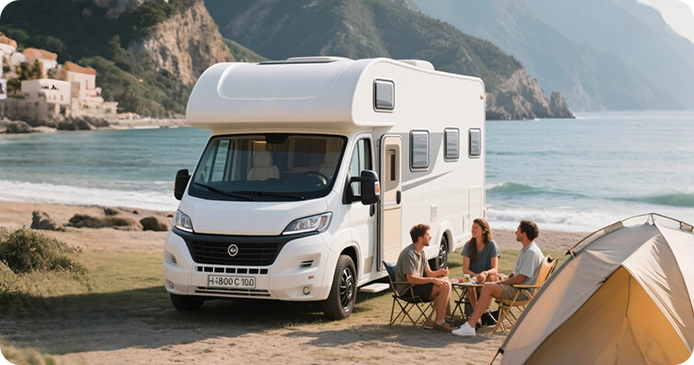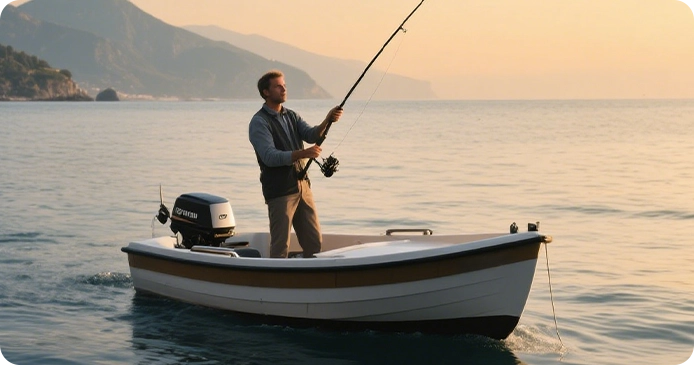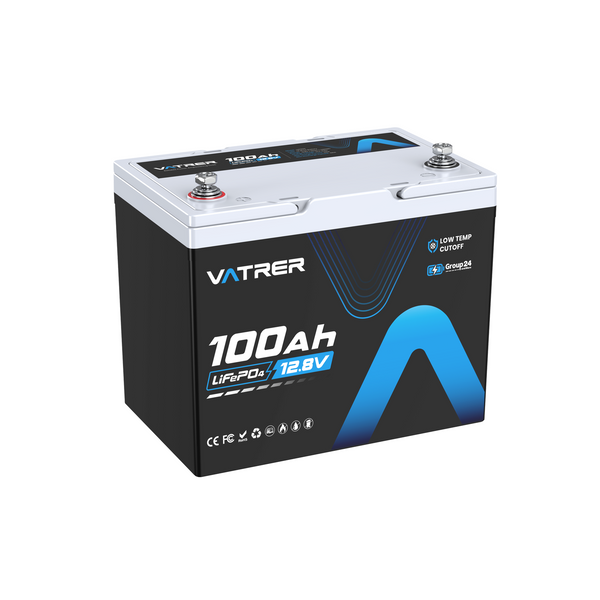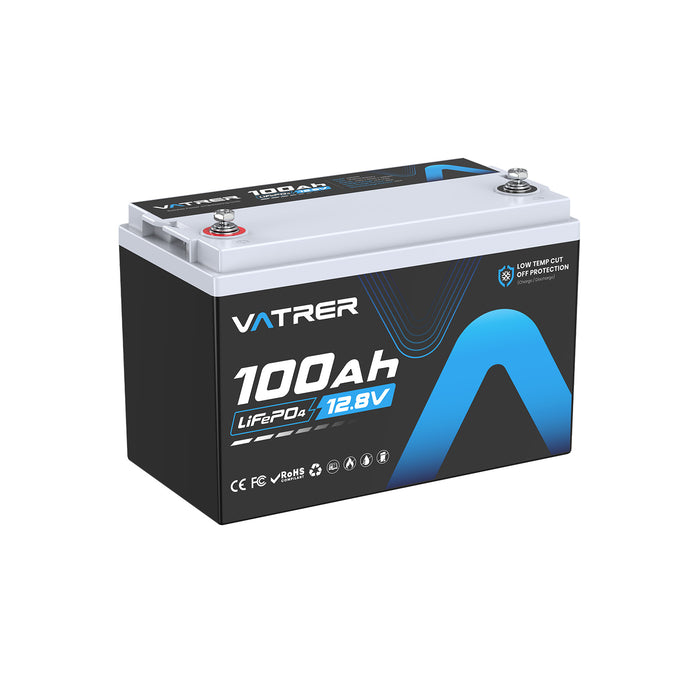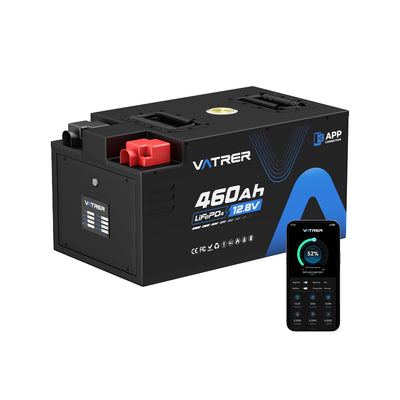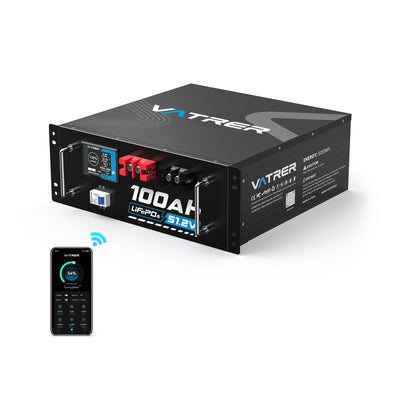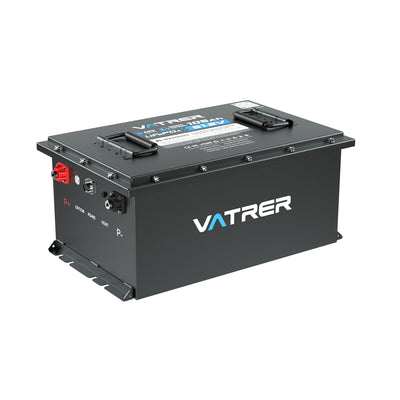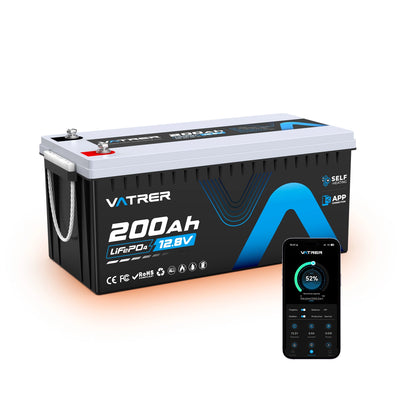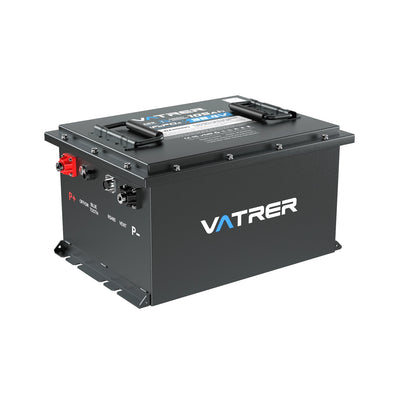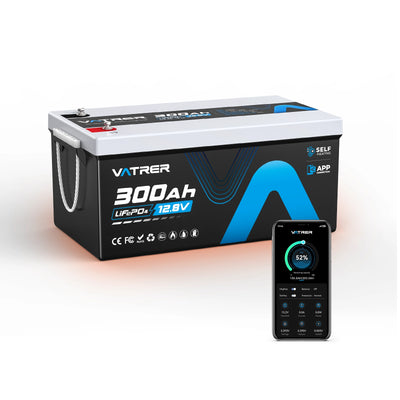Startseite
>
Erhalten Sie die neuesten Nachrichten aus der LiFePo4-Batteriebranche
>
Bleiben Sie nicht stranden! Der Spickzettel des Kapitäns zu Batteriegrößen und Überlebenstaktiken für Schiffe

Bleiben Sie nicht stranden! Der Spickzettel des Kapitäns zu Batteriegrößen und Überlebenstaktiken für Schiffe
von/ durch
XX
am Mai 16 2025
Liebe Bootsfreunde, sprechen wir über etwas Wichtiges, das oft übersehen wird, bis es zu spät ist: Ihre Schiffsbatterie . Bei der Wahl der richtigen Batterie geht es nicht nur darum, etwas Passendes zu finden; es geht darum, sicherzustellen, dass Sie genug Power haben, um Ihren Motor zu starten, Ihre Elektronik zu betreiben und sicher zum Dock zurückzukehren. Wenn Sie es falsch machen, steht Ihnen ein frustrierender Tag auf dem Wasser bevor, oder schlimmer noch, eine gefährliche Situation.
Ich möchte Ihnen die Größen von Schiffsbatterien näherbringen, erklären, warum die Wahl der richtigen Batterie unerlässlich ist, und Ihnen einige Profi-Tipps geben, wie Sie Ihre Stromquelle in Topform halten. Wir stellen Ihnen außerdem eine praktische Größentabelle vor, damit Ihr nächster Batteriekauf zum Kinderspiel wird.

Wichtige Dinge, die Sie klären müssen
- Die physische Passform ist nur der Anfang: Die Gruppengröße einer Schiffsbatterie gibt hauptsächlich Aufschluss über die physischen Abmessungen der Batterie. Die wahre Herausforderung besteht jedoch darin, eine Batterie mit ausreichender gespeicherter Leistung (Amperestunden) und Startleistung (Anlassstrom) für die spezifischen Anforderungen Ihres Bootes zu finden.
- Kennen Sie Ihre Gruppen: Wenn Sie die Gruppengrößen des Battery Council International (BCI) verstehen, können Sie eine Batterie auswählen, die hinsichtlich Leistung, Kapazität und Startfähigkeit optimiert ist.
- Größere Gruppe, im Allgemeinen mehr Power: Normalerweise bedeutet eine größere Gruppengröße eine physisch größere Batterie und oft auch mehr Kapazität – egal, ob es sich um eine altmodische Blei-Säure-Batterie oder eine moderne Lithium-Batterie handelt.
- Wartung ist wichtig: Regelmäßige Überprüfungen und die richtige Pflege sind Ihre beste Voraussetzung für zuverlässige Stromversorgung und eine langlebige Batterie.
Grundlegendes zu den Gruppengrößen von Schiffsbatterien
Bereits in den 1920er Jahren setzte sich der Battery Council International (BCI) für die Standardisierung der Batteriegrößen ein. Dies war ein Wendepunkt, der es uns Bootsfahrern (und auch Autobesitzern) ermöglichte, beim Kauf von Ersatzteilen Äpfel mit Äpfeln zu vergleichen.
Stellen Sie sich die BCI-Gruppengrößen als universelle Sprache für Batterieabmessungen vor: Länge, Breite und Höhe. Dies ist äußerst wichtig, da Ihr Boot mit einem bestimmten Batteriefach oder -fach ausgestattet ist.
- Große Anlagen, große Leistung: Größere Schiffe mit viel Elektronik oder leistungsstarken Motoren benötigen natürlich größere Batterien, die über längere Zeiträume mehr Leistung liefern können.
- Kleineres Boot, einfachere Anforderungen: Ihr Flachboot oder kleineres Runabout ist möglicherweise mit einer kleineren, leichteren Batteriegruppe vollkommen zufrieden.
Nach der Gruppennummer sehen Sie häufig ein „M“ (z. B. Gruppe 24M). Das „M“ bedeutet, dass das Produkt robust für den Einsatz auf See gebaut ist und den Vibrationen und Anforderungen des Lebens auf dem Wasser standhält.
Die gängigsten Größen von Schiffsbatteriegruppen
- Gruppe 24: Ein beliebter Ausgangspunkt für kleinere Boote.
- Gruppe 27: Eine Stufe größer und oft auch leistungsstärker als die Gruppe 24.
- Gruppe 31: Eine sehr gängige Größe, insbesondere für Fischerboote mit Schleppmotoren, und oft ein hervorragender Kompromiss für Start- und Tiefentladeanforderungen. (Vollständige Offenlegung: Unsere 12-V-Lithiumbatterien der Gruppenserie sind als Ersatz für die Gruppen 31 und 24 konzipiert, was Upgrades erleichtert.)
- Gruppe 8D: Das sind die großen Jungs. Schwer, leistungsstark und typischerweise auf größeren Yachten und Handelsschiffen zu finden.
Warum sollten Sie auf die Gruppengröße achten?
Ganz einfach: Das elektrische System und der Motor Ihres Bootes sind davon abhängig. Bei Starterbatterien oder Mehrzweckbatterien korreliert die Gruppengröße oft mit der Startleistung (der Leistung zum Starten Ihres Motors) und der Reservekapazität (wie lange sie Ihre wichtigsten Geräte bei ausgeschaltetem Motor mit Strom versorgen kann).
Die richtige Gruppengröße zu erreichen bedeutet:
- Es passt physisch ohne geringfügige Änderungen in das Batteriefach.
- Sie verfügen über genügend Anlaufleistung für zuverlässige Starts.
- Sie verfügen über ausreichend Reservekapazität für Ihre Bordelektronik.
Und hier noch ein Profi-Tipp: Wenn Sie auf Lithium-Schiffsbatterien (wie unsere Marine-, Trolling-Motoren-Serie ) umsteigen, können Sie im Vergleich zu einer Blei-Säure-Batterie der gleichen Gruppengröße oft die doppelte nutzbare Kapazität erreichen. Das liegt daran, dass Sie eine Lithiumbatterie viel tiefer entladen können, ohne sie zu beschädigen.
Größentabelle für Schiffsbatterien: Ihre Kurzübersicht
Diese Tabelle gibt Ihnen die typischen Abmessungen für gängige BCI-Gruppengrößen an. Messen Sie Ihren Batterieträger vor dem Kauf!
| BCI-Gruppennummer | Millimeter | Zoll | ||||
| L | W | H | L | W | H | |
| 24 | 260 | 173 | 225 | 10 1/4 | 6 13/16 | 8 7/8 |
| 27 | 306 | 173 | 225 | 12 1/16 | 6 13/16 | 8 7/8 |
| 31 | 330 | 173 | 240 | 13 | 6 13/16 | 9 7/16 |
| 8D | 527 | 283 | 250 | 20 3/4 | 11 1/8 | 9 13/16 |
Sehen Sie sich die vollständige Liste der verfügbaren BCI-Gruppengrößen an
Auswahl der richtigen Schiffsbatterie für Ihr Boot: Mehr als nur die Größe
Okay, Ihr Bootshersteller hat die Größe des Batteriefachs aus einem bestimmten Grund gewählt. Eine zu große oder zu kleine Batterie zu verwenden, ist problematisch. Daher ist die Anpassung der Gruppengröße für eine Drop-In-Passung oberste Priorität.
Aber dann müssen Sie tiefer graben:
-
Bewerten Sie den Leistungsbedarf Ihres Bootes:
- Motorstart: Welche Anforderungen an die Kaltstartleistung (CCA) bzw. die Marine-Startleistung (MCA) gelten für Ihren Motor? Lesen Sie in Ihrem Motorhandbuch nach.
-
Hausverbrauch/Hilfsstromversorgung: Listen Sie alle Ihre elektronischen Geräte auf (Fischfinder, GPS, Beleuchtung, Stereoanlage, Livewell-Pumpen). Schätzen Sie, wie viele Stunden Sie diese Geräte betreiben werden. Dies hilft Ihnen, Ihren Bedarf an Amperestunden (Ah) zu bestimmen.
-
Power (Watts) = Voltage (Volts) x Current (Amps) -
Energy (Watt-hours) = Power (Watts) x Time (Hours)
-
- Trolling-Motoren: Diese haben eine bestimmte Spannung (12 V, 24 V oder 36 V) und einen kontinuierlichen Leistungsbedarf.
- Profi-Tipp zu Lithium: Bei Tiefentladung (z. B. beim ganztägigen Betrieb eines Trolling-Motors) sind Lithiumbatterien die bessere Wahl. Sie können fast 100 % ihrer Nennkapazität nutzen, im Gegensatz zu Blei-Säure-Batterien, bei denen Sie normalerweise nur etwa 50 % nutzen sollten, um die Batterielebensdauer zu verlängern.
-
Passen Sie die Batteriekapazität (Ah) und die Spannung (V) an:
- Kapazität: Stellen Sie sicher, dass die Amperestundenzahl der Batterie Ihren berechneten Bedarf erfüllt oder übersteigt. Mehr ist oft besser und gibt Ihnen einen Sicherheitsspielraum. Denken Sie daran, dass eine Lithiumbatterie der Gruppe 31 im Allgemeinen eine höhere nutzbare Kapazität hat als eine Blei-Säure-Batterie der Gruppe 31.
-
Spannung: Die meisten Boote werden mit 12-V-Systemen betrieben. Trolling-Motoren sind jedoch eine häufige Ausnahme:
- 24-V-Systeme: Sie können zwei 12-V-Batterien in Reihe schalten.
- 36-V-Systeme: Sie können drei 12-V-Batterien in Reihe schalten.
- Alternativ erfreuen sich dedizierte 24-V- oder 36-V-Lithiumbatterien immer größerer Beliebtheit. Unsere Marine- und Trolling-Motoren-Serie umfasst beispielsweise Optionen mit 12 V , 24 V und 36 V.
So halten Sie Ihre Schiffsbatterie in Topform
Sie möchten, dass Ihre Batterie lange hält? Die richtige Wartung ist entscheidend, egal ob es sich um eine herkömmliche Blei-Säure-Batterie oder ein modernes Lithium-Kraftpaket handelt.
-
Lade- und Speicherkenntnisse:
- Verwenden Sie immer ein Ladegerät, das für Ihren Batterietyp geeignet ist (Blei-Säure, AGM, Gel, Lithium haben alle unterschiedliche Ladeprofile).
- Befolgen Sie die Ladeempfehlungen des Herstellers.
- Halten Sie die Batterien voll aufgeladen, insbesondere vor der Lagerung.
- Lagern Sie Batterien an einem kühlen, trockenen Ort. Extreme Hitze ist ein Batteriekiller.
-
Regelmäßige Inspektionen:
- Bei Blei-Säure-Batterien: Regelmäßig auf Korrosion an den Anschlüssen (kalkhaltige Ablagerungen) prüfen. Mit einer Drahtbürste und einer Natron-Wasser-Lösung reinigen. Sicherstellen, dass die Anschlüsse fest sind. Bei nicht versiegelten Batterien den Elektrolytstand prüfen und bei Bedarf destilliertes Wasser nachfüllen.
- Lithiumbatterien: Ein großer Vorteil ist, dass sie praktisch wartungsfrei sind! Keine Korrosion, keine Flüssigkeitskontrolle. Die Selbstentladung ist sehr gering, sodass die Ladung bei Lagerung monatelang erhalten bleibt.
- Halten Sie die Oberseite der Batterie unabhängig vom Typ sauber und trocken.
Das Fazit
Um sicherzustellen, dass Ihr Boot zuverlässig mit Strom versorgt wird, müssen Sie sich zunächst mit den Größen von Schiffsbatterien vertraut machen. Dabei geht es um mehr als nur die Abmessungen. Es geht darum, die elektrischen Eigenschaften der Batterie – ihre Startleistung und Kapazität – an die individuellen Anforderungen Ihres Schiffes anzupassen. Berücksichtigen Sie die Vorteile neuerer Technologien wie Lithium, und Sie können Ihre Zeit auf dem Wasser deutlich verlängern.
Die richtige Auswahl und sorgfältige Wartung bedeuten weniger Kopfschmerzen und mehr Spaß beim sorgenfreien Bootfahren.
Benötigen Sie Hilfe bei der Planung Ihrer Stromversorgung? Unser Team hilft Ihnen gerne weiter. Rufen Sie uns unter +1 (660) 260-0222 an – wir helfen Ihnen gerne weiter!
Unsere Produkte der Größengruppe 24 und 31:
Häufig gestellte Fragen (FAQs):
-
Welche Größen gibt es eigentlich bei Schiffsbatterien? Während wir bei Gruppengrößen von physikalischen Abmessungen sprechen, bezieht sich die elektrische „Größe“ auf Spannung und Kapazität. Die meisten Boote verwenden 12-Volt- Batterien. Größere Schiffe oder solche mit leistungsstarken Schleppmotoren verwenden möglicherweise 24-Volt- oder 36-Volt- Systeme. Dies wird häufig durch die Verbindung mehrerer 12-V-Batterien oder den Einsatz dedizierter Batterien mit höherer Spannung erreicht. Die Kapazität (Amperestunden) variiert selbst innerhalb derselben Gruppengröße stark, abhängig von der Batteriechemie und -konstruktion.
-
Was ist der eigentliche Unterschied zwischen einer Schiffsbatterie der Gruppe 24 und einer der Gruppe 27? In erster Linie geht es um die physische Größe und die potenzielle Kapazität. Eine Batterie der Gruppe 27 ist physisch größer als eine der Gruppe 24. Aufgrund ihres größeren Gehäuses bietet eine Batterie der Gruppe 27 typischerweise eine höhere Amperestundenzahl (Ah) , was bedeutet, dass sie im Vergleich zu einer Batterie der Gruppe 24 mit der gleichen Chemie länger Strom liefern kann. Dadurch eignen sich Batterien der Gruppe 27 besser für Anwendungen, die mehr Ausdauer erfordern. Überprüfen Sie immer die spezifische Ah-Zahl auf dem Batterieetikett!
-
Sind alle Batterien der Gruppe 31 gleich? Nein! Obwohl sie die gleichen Abmessungen haben, weist eine Blei-Säure-Batterie der Gruppe 31 andere Leistungsmerkmale (nutzbare Kapazität, Lebensdauer, Gewicht) auf als eine AGM-Batterie der Gruppe 31 oder eine Lithium-Batterie der Gruppe 31. Lithium bietet beispielsweise deutlich mehr nutzbare Amperestunden und eine deutlich längere Lebensdauer bei gleichem Platzbedarf.
Teilen





























